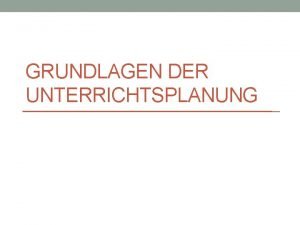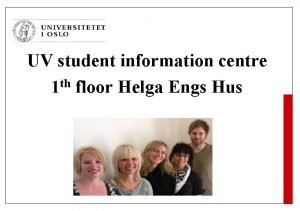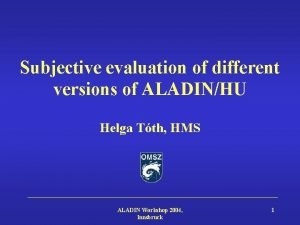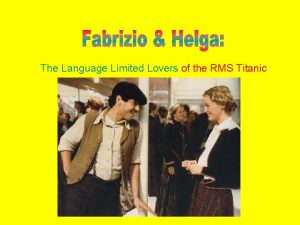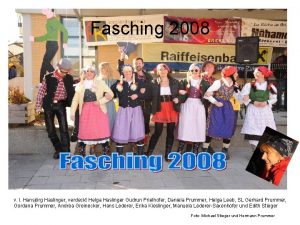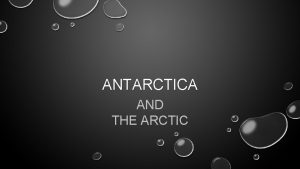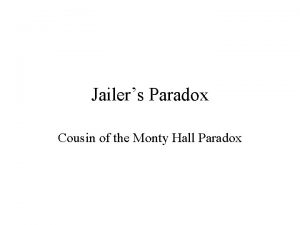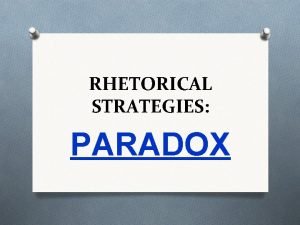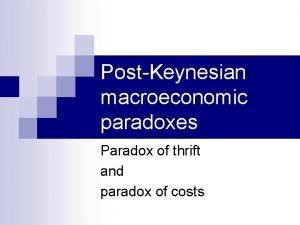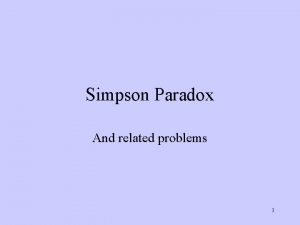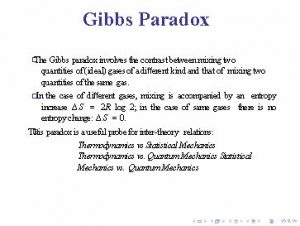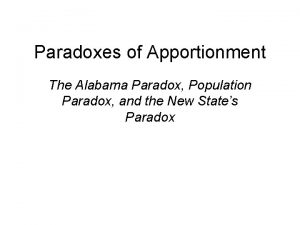Need for Arctic Governance The Arctic Paradox Helga








![[The Evolution of the Arctic Council] • 1996: eight Arctic nations establish Council as [The Evolution of the Arctic Council] • 1996: eight Arctic nations establish Council as](https://slidetodoc.com/presentation_image_h/19d063f5eab5baae7c03e37e1d24d37a/image-9.jpg)






- Slides: 15

Need for Arctic Governance: The Arctic Paradox © Helga Haftendorn, Free University of Berlin Presentation to New Frontiers Conference, Tromsø, January 2013; Not for citation or quotation!

The Case for Arctic Cooperation & Governance • Need to ensure security and stability in the Circumpolar region; • In the Arctic, “security” mostly refers to “soft security”. • To cope with the challenges of climate change; • To control conflicts arising from competing goals and enforce shared interests. 2

The Arctic Definition of Arctic: • Areas north of 660 33‘, • Areas north of forest line & 100 degree July Isotherm; • Human Development Index area marked on map by red Line; • Territory (land- & sea) of the 8 Arctic States: Canada, Denmark w. Faroer and Greenland, Finland, Iceland, Norway, Russia, Sweden and U. S. A. 33

Arctic Paradox: How to Strengthen Governance without Circumscribing Arctic Nation’s Sovereignty? • What is Governance? How to govern a “frozen desert” without a state or political hierarchy? (Bötzel/Risse, 2010) • Governance = institutionalized modes of social/political coordination to produce and implement collectively binding rules or collective goods; • Governance structures are made up by configurations of state and non-state actors; • Governance process consists of modes of social/political coordination by which actors engage in rule making & implementation and the provision of collective goods; • Non-hierarchical coordination is based on voluntary commitments and compliance. Conflicts are solved by negotiations leading to compromise & mutual concessions. 4

Climate Challenges as a Starting Point § Climate change is a catalyst for new governance structures is, it has a big impact on societies and the environment: - enhances access to natural resources (oil, gas, metals); - risks oil spills, damage to natural habitats, harm to traditional societies; - brings danger of over-fishing, unregulated industrial fishing, whale and seal hunting; - worsens conflicts on sea borders, rights of passage, claims for submerged ridges (Lomonosov Ridge); § Climate change can destabilize post-Cold War resource & power balance and -> lead to a “battle for the pole”; § Currently, however, the Arctic is a peaceful region; § To safeguard security and stability in the region, states use both national strategies & multilateral governance structures. 5

Environmental Hazards: Russian oil platform sinks, Alaska oil rig blows-up 6

Competing Arctic States’ National Strategies in the Region • Canada: sovereignty and security, insistence on NWP as internal passage, coastal shelf conflict with US, Dk, Ru; • Denmark: defense of Greenland, freedom of Northern seaways, claims on Hans I. & Lomonossow Ridge; • Iceland: freedom of surrounding seaways; • Norway: economic & social development of High North, exploitation of hydrogen resources, protection of national security and fragile ecosystems, détente with Russia; • Russia: economic development of Northern Siberia, NSW as internal passage, claim for coastal shelf extending to North Pole; • USA: freedom of the seas, security for Alaska from hostile incursions, exploitation of gas/oil resources (land sea). 7

Arctic Multilateral Governance Structures • Reflect Arctic puzzle regarding ambivalence between multilateral and national priorities; • Respond with a network of legal (UNCLOS), political (AC, BEAC), ecological (AEPS) and maritime institutions (IMO); • Most important legal institution: Law of the Sea Treaty (UNCLOS), political institution: Arctic Council (AC); • Processes of confidence building, information exchange, cooperative research, negotiations & institution building; • Results are joint strategies on environmental protection, sustainable development, safe resource exploitation, hazard-less navigation. 8
![The Evolution of the Arctic Council 1996 eight Arctic nations establish Council as [The Evolution of the Arctic Council] • 1996: eight Arctic nations establish Council as](https://slidetodoc.com/presentation_image_h/19d063f5eab5baae7c03e37e1d24d37a/image-9.jpg)
[The Evolution of the Arctic Council] • 1996: eight Arctic nations establish Council as high-level forum for implementing AEPS; set up WGs to provide scientific answers to region’s challenges; invite permanent observers from indigenous peoples, interested non-Arctic states and institutions; Senior Arctic Officials (SAO) prepare bi -annual reports to Ministers + coordinate follow-up; - 1 st phase sees Arctic as “frozen desert”, basically focused on Arctic Environmental Protection Strategy implementation; - 2 nd phase: change of concepts, with Arctic Climate Impact Assessment (ACIA) the new metaphor is “Arctic in change”; out of concern about sea shelf allocation five Arctic Coastal States in 2008 meet in Ilulissat, protests from “left outs”; - 3 rd phase: 2011 Nuuk Ministerial members conclude S&R Treaty, establish perm. secretariat, appoint Magnus Johannesson (IS) as Secretary and vow to strengthen AC. 9

Nuuk Ministerial Meeting, May 2011 10

Arctic Governance Achievements • Today the Arctic Council is a prominent and visible Arctic actor, but has still weak governance functions; • Success of Governance due to strict observance of fine line between joint action and respect for Arctic states’ sovereignty; • Biggest achievement has been the development of strategies to protect the endangered Arctic natural habitat; • Establishment of jointly funded Arctic Secretariat + • nomination of General Secretary, gives AC work more permanence; • Conclusion of binding international agreements: AEPS (1992), S&R Treaty (2011), Guidance on safe oil & gas exploitation; • Conflict resolution by reference to UNCLOS and through negotiations, results are compromises or mutual concessions; • IMO created a set of maritime conventions: Safety of Life at Sea (SOLAS), Prevention of Pollution from Ships (MARPOL), but need to adopt mandatory polar code to end fragmentation. 11

Indigenous Peoples of the North 12

Arctic Governance Deficits • AC decision-shaping, not –taking, weak governance function; • Lack of crisis response mechanisms & of instruments for implementing consensus decisions/recommendations; • Limited agenda: (military) security, shipping, oil & gas, living marine resources, & tourism are not dealt w. in gov. structures; • Inclusion or exclusion of Non-Arctic states in AC? Unclear status of Permanent Observers, selected according to their research achievements + financial contributions; • Continuing debate on AC role, reach and observers; • Indigenous representatives not equal partners, weak role of Indigenous Peoples’ Secretariat, Russia prosecuting RAIPON; • Linkage between state and indigenous peoples’ level but not with other sub-state entities (e. g. provinces); • Shortage of funds for Arctic work program and research; • Little institutionalized cooperation between Arctic organizations. 13

Conclusions • Is there a solution for the Arctic Paradox? • Impact of governance helps strengthen and expand Arctic network of institutions, invigorates links between them; empowers AC to take binding decisions; • Governance improves communication, exchange of information on and transparency of Arctic activities; • Follows a pragmatic governance approach, blending multilateral procedures with respect for Arctic states national interests; • National approaches should strengthen multilateral structures, joint institutions offer a bonus for compliance such as secure access to resources, financial & technological support; • Is the AC prepared for fundamental geopolitical changes and new Arctic political actors (EU, China)? 14

Thank you for your attention! 15


